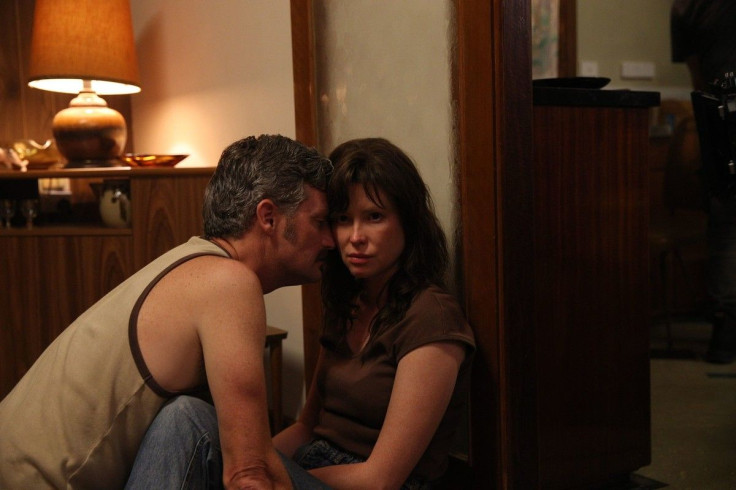The project of most serial killer movies is to monsterize, elevating their characters to mythic archetypes. And it’s not just because of Silence of the Lambs. In 1931’s M Peter Lorre’s child-killer is marked most by his eerie whistle and his final defense — that his crimes are not like yours and that his demoniac drives puts him in a separate category of moral horror entirely. In Seven the killer is just a tool of a grand design, in Halloween a force of nature, in Zodiac the killer could be anywhere and everywhere, more a vaporous apparition than any truth at all. But in Hounds of Love, the serial killers are natural outgrowths of desire, power and, most surprisingly, the suburban nuclear family. In this the film touches on a different horror entirely: that monsters lurk in normalcy too.
Based on Australia’s Moorhouse murders, Hounds of Love is about a lower middle-class suburban couple kidnapping young women for monstrous sex play, then killing and burying them out in the woods. Vicki (Ashleigh Cummings) is to be their fifth victim, after Evelyn (Emma Booth) and John (Stephen Curry) lure her into their car with the promise of a joint and a lift to the party she snuck out for. They drug her and chain her to a bed.
Unlike in Silence of the Lambs, there is no basement lair; no underworld metaphor. Instead, they chain her up in a bedroom right in the center of the house, with a clear view of the front hallway and the kitchen. They take her at knifepoint to their normal bathroom, complete with daytime sunlight streaming in from a well-maintained backyard. Their home is immaculate, John demanding a domestic order that borders on compulsive. Only a boarded-up window and an imposing fence hides their activities from the nosy neighbors.
As a couple John and Evelyn couldn’t appear more respectable, with Evelyn in mom jeans and John neatly tucked and trimmed, looking more like he should be a flying ace in a Sopwith Camel than a serial killer. Even more remarkable, it’s no veneer. Their serial killing isn’t their hidden life, but a normal extension of their broken domesticity. For John, tormenting Vicki is parceled with the power he exercises at home because of his powerlessness outside, where he’s bullied by local meatheads. For Evelyn, it’s about satiating John’s monstrous side to build a home stable enough for her estranged kids, with domination over the young girls that draw John’s eye a definite bonus.
But Vicki is not so easily dominated. She figures out the game early on and fights where she can: jumping for open windows, loosening hand bonds and inserting a code in a fake ransom letter to her parents. And most importantly, her social fluency (on display earlier with both her boyfriend and working both sides of her split family) quickly gives her a handhold in the corrosive inequalities between John and Evelyn. Every moment she gets Evelyn alone she pushes the wedge between them deeper.
It’s a powerful dynamic, chaining the character progression to the exact mechanisms of suspense. When Vicki makes a temporary escape or is sexually assaulted by John, the tension is twisted over double, layered atop both the physical violence and the psychic turbulence underneath it. This works fantastically until the very end, when the two narrative levels can’t decouple. Because we know throughout the terms of engagement — Vicki must turn Evelyn against John — there’s no room for a breakaway. In Silence of the Lambs the police procedural ends when Clarice Starling chases Buffalo Bill into the basement (that underworld again) and it becomes a stalking ritual, with Clarice battling the monster in its own labyrinth. Instead, Hounds of Love is about waiting for Vicki’s pressure to split them apart. And seeing something snap that you knew all along was destined to snap feels less like a climax and more like an inevitability. Hounds of Love is made anticlimactic by its own intimacy.
But while its last impression might be underwhelming, Hounds of Love is powerful in a way other serial killer films are not. Some reviews have described it as torture porn, which is ludicrous, Hounds of Love is relatively brutality free. There’s rape and sexual torture, but mostly off-screen — indicated by Evelyn or John bringing out or packing up their little box of hemp rope and dildoes. But mostly Hounds of Love is intense, tightening the screws on a perversion of family until the only way out is death.


















